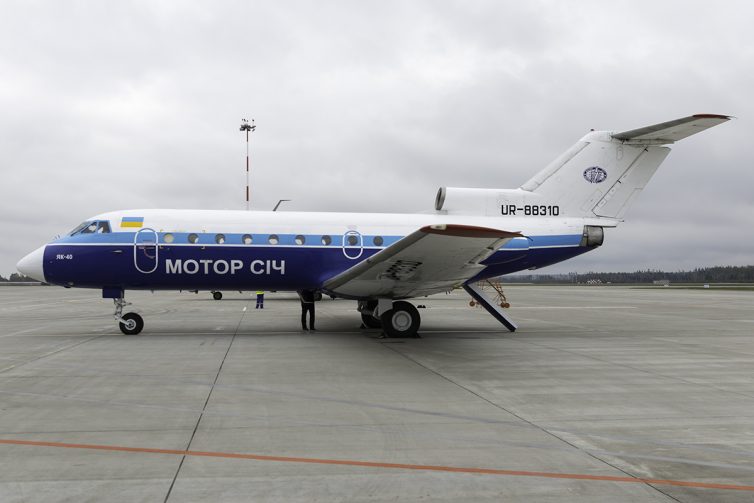
This lovely Yak-40 on the ramp of UMMS belongs to Motor Sich – Photo: Bernie Leighton | AirlineReporter
Since 1907, it has been home to various instances of the same engine manufacturing concern over varying countries and names. Today, Zaporozhye is the headquarters of Motor Sich; the largest producer of Soviet-era and Russian aerospace turbine engines by quantity. While they are best known for the Ivechenko-Progress D36/4D36 series engines, they also manufacture the famed D-18 engine attached to the ANs 124 and 225. To top that off, they also manufacture the most important gas turbines of all: the kind you put in helicopters. That’s awesome. But you probably don’t need to know much more about that part of Motor Sich.
Of course, this is the former Soviet Union. For reasons hard to explain, they founded a corporate shuttle service in 1984. After the collapse of the Soviet Union, Motor Sich did not die, in fact it expanded its scope to general passenger operations.
This is Motor Sich Airlines.
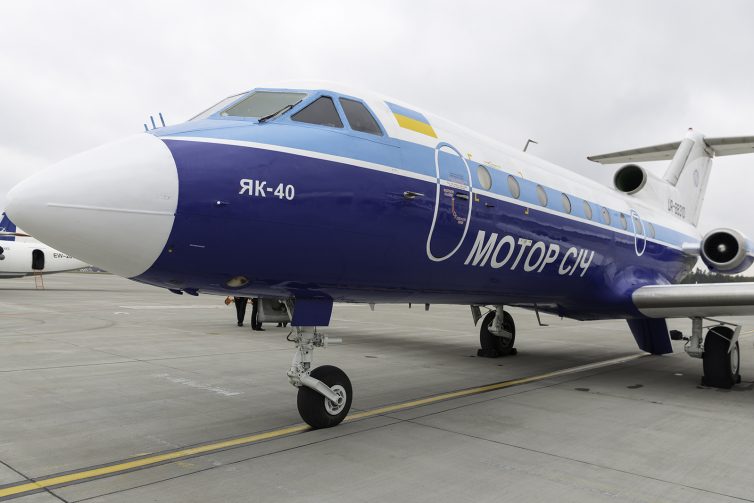
Now that’s a profile! Photo: Bernie Leighton | AirlineReporter
They have Yak-40s. If you have a Yak-40, I will fly you.
My contacts within the Belarusian travel scene had arranged with Motor Sich to swap one of their An-24s out of their flights from Zaporozhye to Minsk in exchange for a Yak-40. Then they were to have it stick around for an hour or two for a bunch of us Soviet metal hungry tragics to do a basic instrument training flight on as passengers.
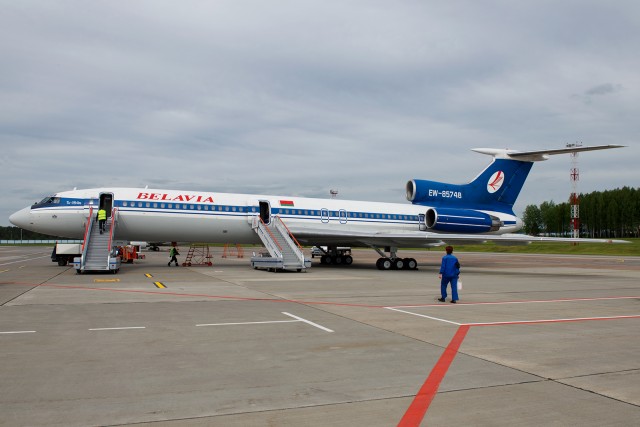
Our chariot, EW-85748, on the ground at Minsk National Airport – Photo : Bernie Leighton | AirlineReporter
From the [AR]vault: This story was originally published on June 8, 2015.
The Tupelov Tu-154 is a classic airliner that many AvGeeks admire, but unfortunately it will no longer be able to fly with-in continental Europe. I was lucky enough to snag a seat on the last flight, a Tu-154M on Belavia to Minsk (MSQ).
You see, many in Europe were getting upset with the rare Soloviev D-30 engine gracing their passenger airports. The noise and the environmental impact did not make many friends. It is too bad, because it’s not like the 737-800 is replacing the Tu-154M on a one-to-one basis with every airline operating them at a speed comparable to that of light anyway. Why even bother other than to make a point?
My friend, who happens to divide his time between Paris and Minsk, runs an aviation enthusiast tour company and asked if I wanted to join a group to give the Tu-154 a send-off from Europe. I packed my things and ended up in Geneva (GVA) on May 29th, 2015.
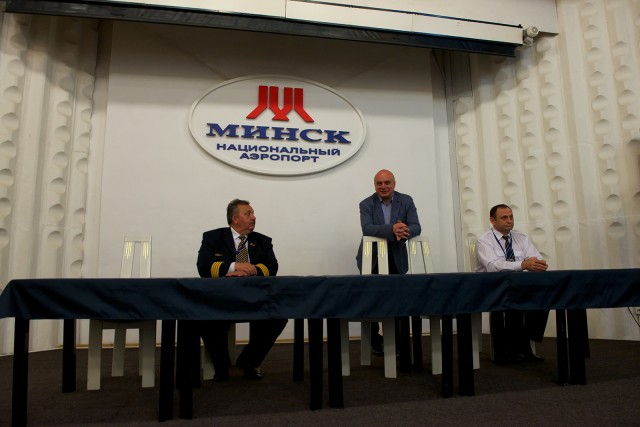
Belavia’s chief Tu-154 pilot, Deputy Director of Marketing and International, and Head of Technical at a quasi press conference in Minsk – Photo: Bernie Leighton | AirlineReporter
Bernie, why are you starting a flight review with a picture of a bunch of Russian men at a table? Because this is not a story about where the airline Belavia was — this is more about where Belavia is going. Legally speaking, Belavia turns 20 next March, but they are actually much older. Back in the times of the Soviet Union, Aeroflot used to be broken down into departments based on the Soviet Republics. In other words, there used to be Aeroflot Belarus that was headquartered in Minsk. The Belorussian Directorate of Civil Aviation first came into being in 1953 with its first flight between the old Minsk airport and Moscow.
Having spent so much time working with Belavia and their historic Tu-154s, it’s very important to share why Belavia exists, but also what their current passenger experience looks like.
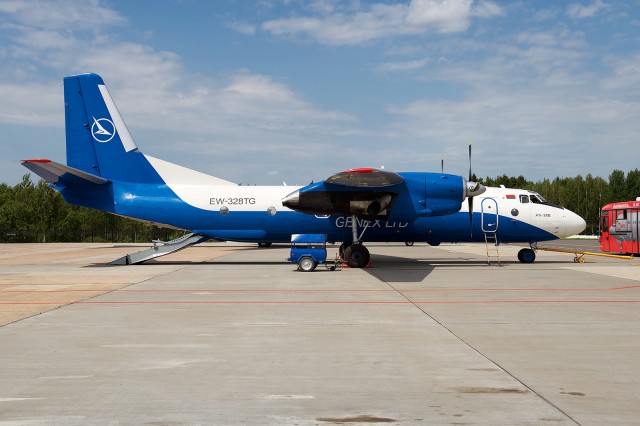
EW-328TG, an AN-26B side-on. Photo – Bernie Leighton | AirlineReporter
Antonov’s AN-26 is not a passenger plane, not even close. The AN-26 stems from the passenger AN-24– except it’s an AN-24 with a retractable cargo door. Same Ivchenko-Progress AI-24VT engines, same Kuznetzov APU. Just a door and some bubble windows in the flight deck separate it from its more, passenger-appropriate, forerunner.
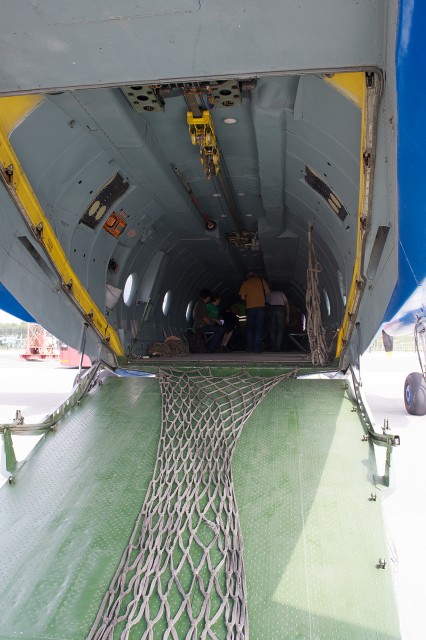
Boarding an AN-26B. Photo – Bernie Leighton | AirlineReporter
The cargo ramp is actually relatively slippery, so one must pay close attention and walk up the net. That photo also illustrates the fact that the AN-26 is equipped with an overhead crane to make loading easier.
The seats are hard — hard and linear. There are four windows in reasonable shape, but they barely make the cabin lighter than a dim alley, but it’s the thought that counts. All this didn’t take away from the fact that I had the opportunity to fly in this Ukrainian-built aircraft.





